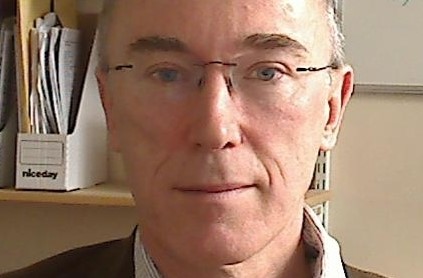Rebels in Syria used a gas chamber to murder dozens of civilian captives, a university professor has claimed.
The claim – which is not supported by any evidence – formed part of a Powerpoint presentation that Edinburgh University professor Paul McKeigue showed to a meeting in London last month.
The meeting was sponsored by Labour MP Fabian Hamilton who is Shadow Minister for Peace and Disarmament and was held on parliamentary premises in Portcullis House.
McKeigue is a member of the quasi-academic Working Group on Syria, Propaganda and Media, which denies the Assad regime's use of chemical weapons in Syria and disputes Russia's use of a nerve agent against the Skripals in Britain.

Two other members of the group – Professor David Miller of Bristol University and Piers Robinson, a former professor at Sheffield University – also gave presentations at the Westminster meeting.
The group maintain that chemical attacks reported in Syria were "staged" by rebels in order to falsely blame the regime for them.
In Douma in 2018, more than 30 people were found dead in a building which appeared to have been hit by a gas cylinder probably containing chlorine.

A few months later, the Working Group suggested that the dead were captives killed in a "managed massacre" which had been dressed up to look like a chemical attack. The group's view at the time was that the supposed massacre had been carried out on site, probably using chlorine.
However, McKeigue now says the victims' bodies were brought to the building from elsewhere, after they had been "killed in a gas chamber".
There have been no previous claims of rebels using a gas chamber, and McKeigue seems to have arrived at his conclusion by a process of elimination – after discounting other possible explanations such as an actual chemical attack.
His presentation lists four factors which he says point to killings in a gas chamber:
1. "Most of the victims appear to have died at about the same time from the same cause. It would be an improbable coincidence that the bodies happened to be available just at the time they were needed to stage a chemical incident."
2. "The hospital dousing scene was recorded at about 7 pm, no later than the earliest estimate of the time of death of the victims. Those who recorded the hospital scene had to know in advance that bodies of victims would be available."
3. "Victims showed no signs of smoke inhalation or of exposure to bombardment, with the exception of one victim who was covered in grey dust and had an airway in place."
4. "Grimy hands and clothes suggest that the victims were held without access to washing facilities."
Previously McKeigue wrote two ludicrous articles (here and here) using "probability calculus" with assistance from Bayes’ theorem and Hempel’s paradox to claim that the deaths in Ghouta (2013) and Khan Sheikhoun (2017) were not the result of chemical attacks by the Assad regime but "a managed massacre of captives [by rebels], with rockets and sarin used to create a trail of forensic evidence that would implicate the Syrian government in a chemical attack".
- FURTHER READING: Syria and chemical weapons
A compilation of blog posts and documents looking at the arguments and the evidence

 RSS Feed
RSS Feed
